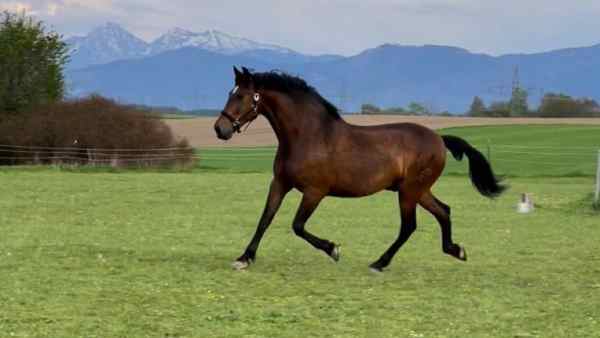Animals that start with H are some of the most varied and interesting creatures on the planet. From the humble housefly to the feared hippopotamus, there are many different animals that begin with this letter. Some, like the hamster, are popular pets, while others, such as the hyena, are more feared than loved.
However, all of these animals are intriguing in their own way and are sure to fascinate anyone who takes the time to learn about them. So whether you’re looking for a new pet, want to learn about a particular animal, or simply want to impress your friends with your knowledge of the animal kingdom, Stay tuned to this article.
Table of Contents
01. Haddock
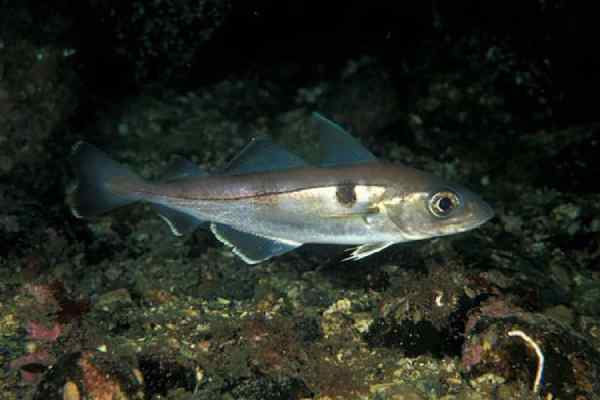
The haddock is a fish that is between one and three feet long and weighs about seven pounds. The biggest ever caught haddock was 40 pounds. The fish is easy to recognize because it has a black or purple line running down its back and a unique mark on each side. People sometimes call this mark the “Devil’s thumbprint,” and it stands out a lot on the white or silver body.
The haddock also has three dorsal fins on its back, two anal fins on its bottom, and a small barbel on its chin, which it probably uses to get a feel for its surroundings. Haddock lives in the north Atlantic Ocean, where the water is cool.
Interesting Fact: In both commercial and recreational fishing, the haddock is a favorite.
02. Habu Snake
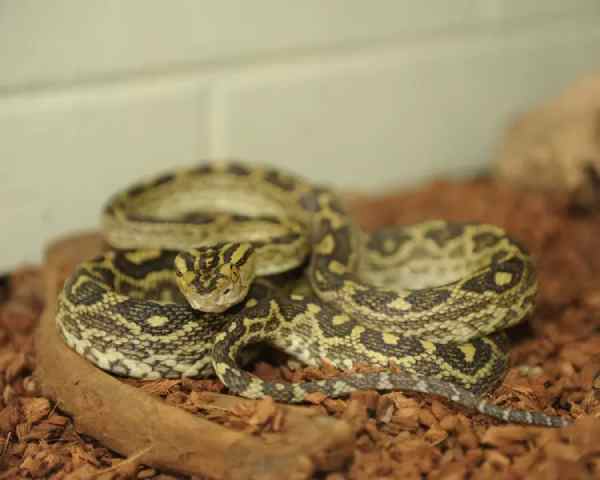
The Habu Snake is a species of Pit viper found in East Asia. It is one of the most venomous snakes in the world, and its bite can cause severe pain, swelling, and tissue damage. The venom contains hemorrhagic components that break down blood vessels, as well as cytotoxins that destroy cells.
Venom can also cause organ damage and even death. Most people who are bitten by a Habu Snake do not die from the experience. With prompt medical treatment, they will usually recover completely within a few weeks. Some people do suffer a permanent disability due to the venom’s effects.
Interesting Fact: Habu pit vipers give birth to live young, in contrast to other pit vipers.
03. Huntsman Spider

Huntsman spiders are large, venomous spiders that are known for their crab-like legs. These spiders typically hunt on flowers, where they ambush insects. Huntsman spiders are also known to enter homes, where they help to control cockroach populations. Some people welcome these spiders into their homes, while others view them as pests.
Huntsman spiders are not considered dangerous to humans, but their bites can be painful. These spiders are found in tropical and subtropical regions all over the world.
Interesting Fact: Huntsman spiders don’t make webs, but they do use silk to make a cocoon.
04. Humpback Whale

Humpback whales are easily identifiable by their large size and distinctive shape. They have a long body with a hump near the dorsal fin, and their head and jaw are covered in hair follicles.
Humpback whales typically live near the shores of oceans, where they can find plenty of food. Due to their rare albino coloration, albino humpback whales are offered extra protection under the law. Humpback whales are gentle giants that are beloved by many people around the world.
Interesting Fact: Humpback Whales have no teeth. Instead, they have plates of keratin that they use as baleen.
05. Humboldt Squid
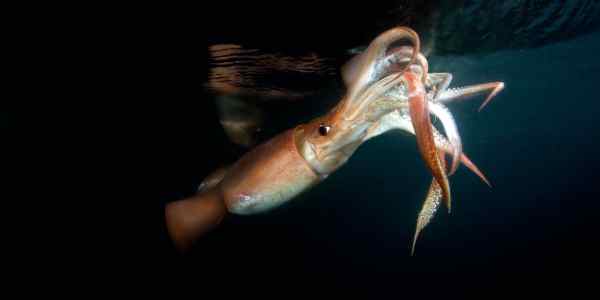
Humboldt squids are big cephalopods that live in deep waters off the coast of Chile and Peru. They get their name from the Humboldt Current, a cold water current that runs along the coast of South America. These squids grow to be up to three feet long, and they have ten tentacles a single tentacle might have from around 100 to 200 suckers. Their bodies are cone-shaped, and they have two spring-like fins at the sides. Humboldt squids are predators, and they hunt fish, crustaceans, and other squids.
Interesting Fact: Humboldt Squids use color to talk to each other.
06. Horseshoe Crab
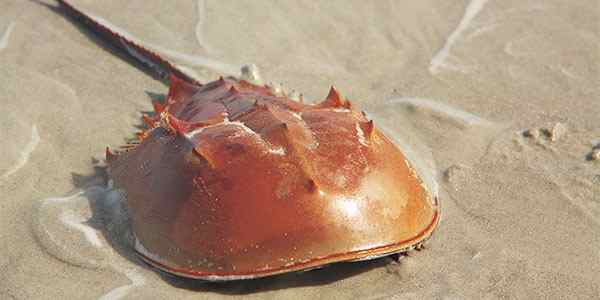
The horseshoe crab is not actually a crab at all but is more closely related to spiders. It gets its name from its distinctive horseshoe-shaped shell, which protects its soft body. The horseshoe crab also has a long, stiff tail that helps it move through the water.
The most notable of all is the horseshoe crab’s eyes. There are eyes under its head and even on its tail. This allows the horseshoe crab to have 360-degree vision, which helps it avoid predators and find food.
Interesting Fact: Horseshoe crabs predate the age of the dinosaurs.
07. Horned Viper
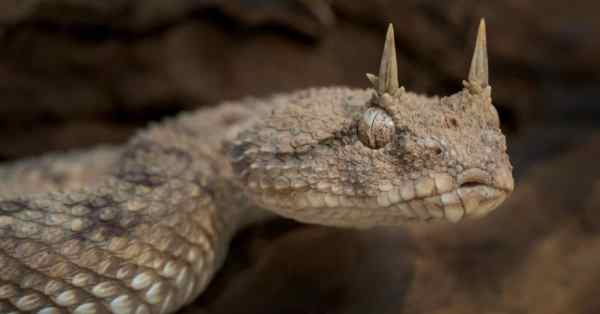
The horned viper is a species of venomous snake that is found in deserts and other dry, rocky habitats. Like all snakes, it has scales that cover its body to protect it from the environment and potential predators.
The horned viper also has an extra set of scales above its eyes and nose, which help to shield these sensitive areas from the sand and sun. The Sidewinder is also distinctive for its method of travel, which involves moving sideways in a series of short hops.
Interesting Fact: It has been speculated that Cleopatra killed herself with this snake.
08. Horned Frog
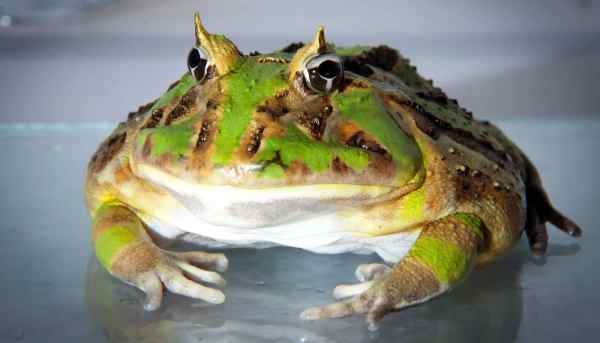
The horned frog is an aggressive creature that is equipped with pointy eyelids to help it blend in with its surroundings. The eyelids look like leaves, allowing the frog to hide on the forest floor.
The frog also has a wide mouth, which allows it to catch prey that is much bigger than itself. The horned frog is so aggressive that it will even attack animals that are larger than it is.
Interesting Fact: The horned frog is a common exotic pet.
09. Hornbill
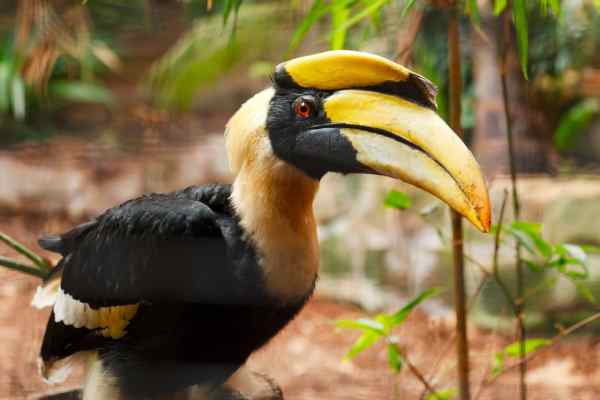
The hornbill is a brightly colored bird that is native to tropical Africa and Asia. It gets its name from its long-curved bill, which has a hollow chamber at the base that is believed to amplify sound.
The hornbill also has prominent eyelashes and a long tail. Male and female hornbills are usually different colors, with the males being more brightly colored. The hornbill is a social bird that typically lives in pairs or small groups.
Interesting Fact: Hornbills can change the color of their bills by rubbing them on a gland under their tails.
10. Horn Shark

Horn Sharks are easily recognizable with their distinctively shaped heads. Their heads are blunt, with a curved snout, and they have sharp spines protruding from their back. They also have ridges above both eyes that resemble horns, giving them their name.
Horn Sharks suck their prey into their mouths. They are able to open their mouths extremely wide, allowing them to swallow whole prey. Apart from hunting for food, Horn Sharks also lay eggs. They lay their eggs in cases made of sand and mud, which they attach to rocks or reefs.
Interesting Fact: The average wild lifespan of a Horn Shark is 50 years.
11. Honey Buzzard
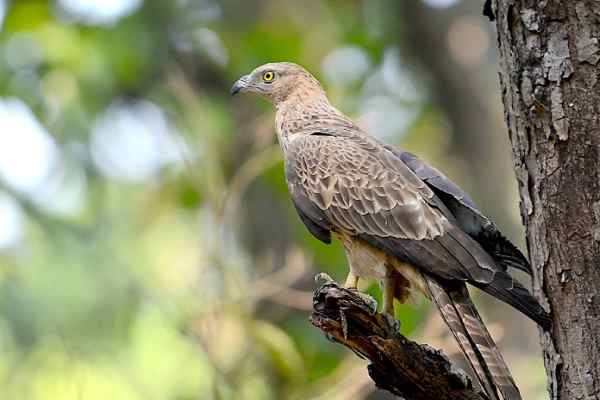
The Honey Buzzard is a medium-sized raptor with wings that can stretch up to four feet. The larvae of bees and wasps are its primary source of food, hence the name, although despite the association with honey, it is not related to bees or wasps. Instead, the Honey Buzzard uses its long, curved bill to catch and hold insects. On occasion, it will also feed on small birds and frogs. The Honey Buzzard is found in wooded areas throughout Europe and Asia, and it is a protected species in many countries.
Interesting Fact: Honey buzzards can be seen in zoos around Europe but not in the United States.
12. Honey Badger
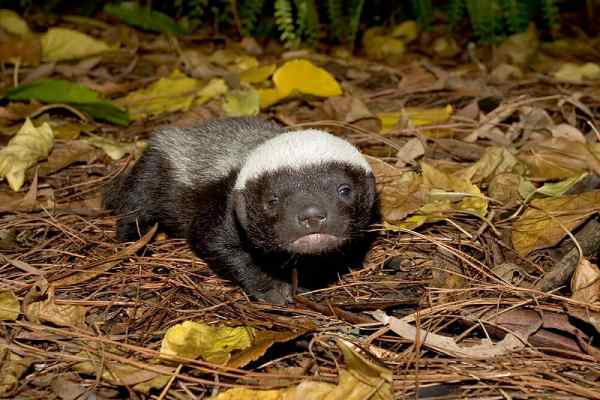
A honey badger will attack anything it perceives as a threat, including a human. Its body is long and sturdy, and it has a flat skull and long claws. Its thick hide protects it from harm, be it an arrow or a swarm of bees. The honey badger, like the skunk, can emit an unpleasant stench when it feels threatened.
Interesting Fact: Honey badgers can withstand the poison of any snake.
13. Honduran White Bat
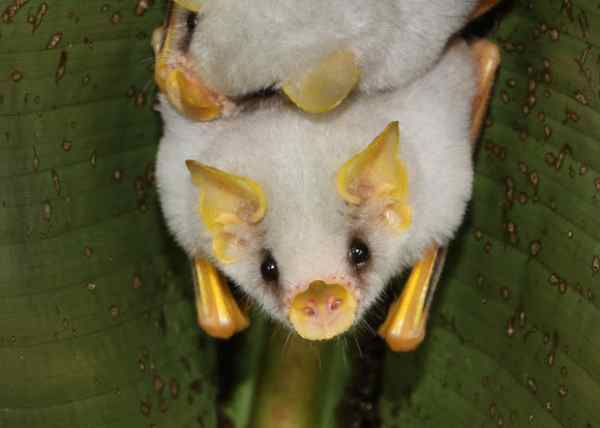
The Honduran White Bat is a striking creature, easily distinguishable by its white fur and distinctively shaped nose. The orange coloration of the bat’s nose, lips, and ears provides a vivid contrast against the paleness of its fur, and these vivid colors are thought to play a role in helping the bat attract mates.
The Honduran White Bat is also notable for its habit of building ‘tents’ out of leaves, which it uses as a roosting site.
Interesting Fact: A single species of the fig tree is the sole source of food for the Honduran white bat.
14. Hippopotamus
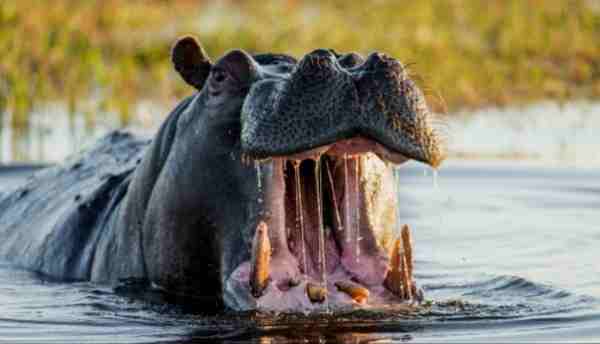
Hippos are among the most fascinating creatures found in Africa. Having eyes, noses, and ears up high, these massive, barrel-shaped, semiaquatic creatures are a sight to behold.
Hippopotamuses can outrun cars at speeds of up to 30 miles per hour, belying their large bulk. Even though they have massive mouths full of sharp teeth, these creatures only eat plants.
Interesting Fact: Hippos make an antibacterial “sweat” that is oily and pink.
15. Heron

Hercules Herons live all over the world in wetlands. Besides their length, these birds are distinguished by their S-shaped neck and pointed beaks. Goliath Herons are the largest of the herons, reaching a height of up to 5 feet.
Herons are shy creatures that are most active at dawn and dusk. They feed on fish, frogs, and other small animals. Herons mate for life and build their nests in trees near water.
Interesting Fact: The feet of a heron dangle below it as it flies. Almost no other birds can fly like this.
16. Hercules Beetle
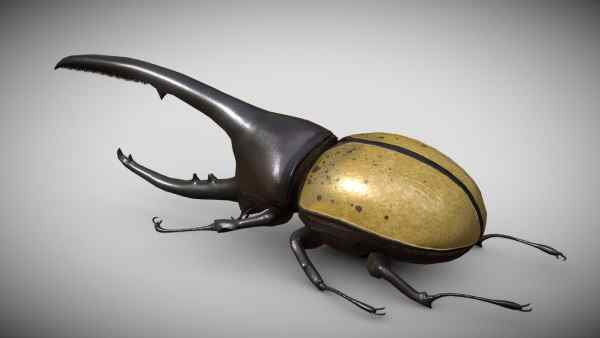
Hercules Beetles are a type of beetle known for their large size and hard, armored shell. They get their name from their Hercules-like horns, which are only present in males. These horns are used for fighting other males over mates.
Hercules Beetles can fly, and spend most of their lives in larvae form, which lasts for about two years. During this time, they grow to be one of the largest flying insects.
Interesting Fact: When disturbed, Hercules Beetles produce a huffing sound.
17. Hedgehog
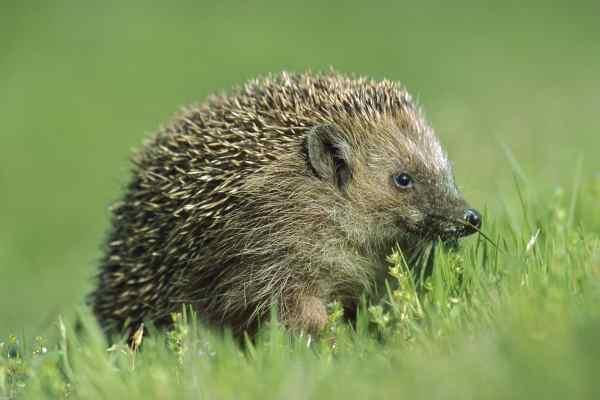
Hedgehogs are prickly little creatures that are native to Europe, Africa, and Asia. They have a coat of stiff, sharp spines that help to protect them from predators.
As a defense mechanism, they will curl into a tight ball with their spines exposed. Hedgehogs are nocturnal animals, and they spend most of their time foraging for food.
In the wild, their diet consists mainly of insects, worms, and other small invertebrates. However, they will also eat some garden pests, making them good pets.
Interesting Fact: It is against the law in many states to keep a hedgehog as a pet.
18. Harpy Eagle

Harpy Eagles are one of the largest eagle species, with a wingspan of 6.5 feet. They are most easily distinguished by the crown of feathers at the top of their heads and their yellow feet. Harpy eagles have keen eyesight and can identify prey from great distances. In addition to their keen eyesight, Harpy Eagles also have powerful talons that they use to hunt their prey. These birds typically live in tropical rainforests, where they nest in tree cavities or on ledges.
Interesting Fact: The talons of a Harpy Eagle are nearly the size of those of a Grizzly Bear.
19. Hare
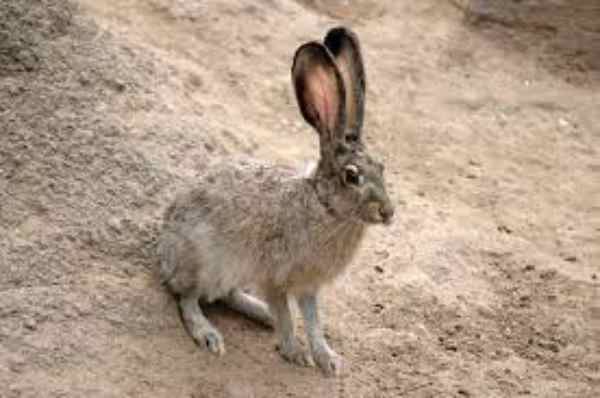
Hares are little, fluffy mammals that have large eyes and ears, short front legs, and strong, sturdy hind legs. They are like rabbits, but they don’t live on the ground as rabbits do.
Hares have a vertical leap of 10 feet, and they can run as fast as 50 miles per hour for very short periods of time. There is no variation in the speed at which hares travel, which is always around 30 miles per hour.
Interesting Fact: Hares need to chew grass regularly to keep the growth of their teeth in check.
20. Hamster
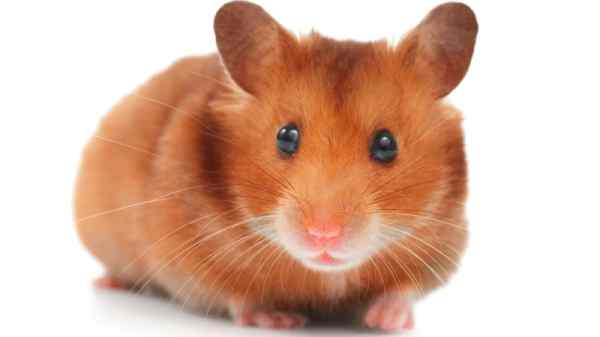
Hamsters are small, gentle creatures that make popular house pets. They have wide feet, stout bodies, and stubby legs. Hamsters are mostly nocturnal, so they like to sleep during the day. Hamsters are mostly peaceful pets, although they can bite if their sleep is interrupted. In the wild, hamsters have many predators, but they are swift and can sometimes get away.
Interesting Fact: Mother hamsters will hide their offspring in their mouth pouches if they feel threatened.
21. Hammerhead Shark
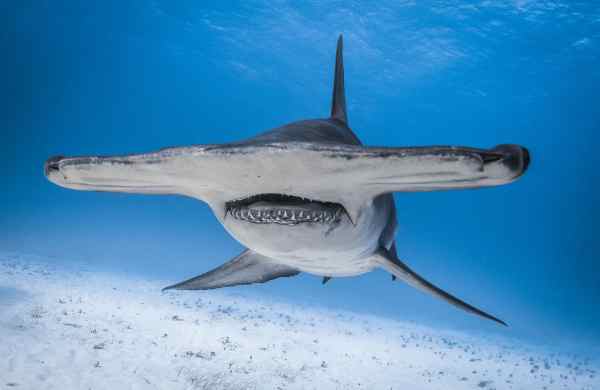
Hammerhead Sharks are one of the most easily recognizable types of sharks, thanks to their distinctive head shape. Hammerhead Sharks get their name from their long, flat heads, which are shaped like a hammer. This unusual head shape gives Hammerhead Sharks a number of advantages. First, it gives them superb binocular vision to locate prey far away. Their streamlined head form helps them to swim rapidly and gracefully. The Hammerhead Shark’s robust head can be utilized to attack prey. Hammerhead Sharks are found in warm coastal waters around the world and can grow to be up to 6.1 meters long.
Interesting Fact: The Hammerhead Shark can see almost all directions, except straight in front of its head.
22. Hagfish
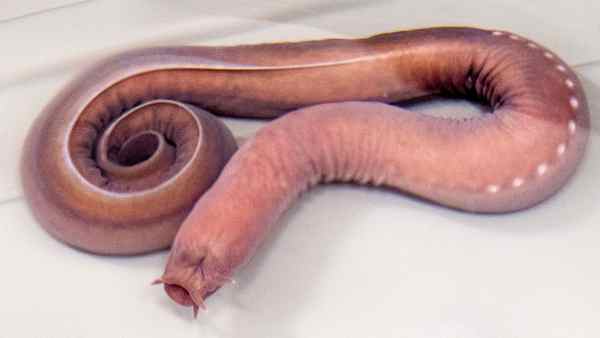
The Hagfish is a very unusual creature. The slimy creature might have a pinkish-gray, blue, or purple body. There is no jaw on this eel-like creature. The toothed, ribbon-like tongue on a hagfish’s head is used to dig for food on the ocean floor. To protect themselves from predators, hagfishes secrete thick, sticky slime from glands all over their bodies. They have three hearts and may take in food through their skin. There is little evidence of evolutionary change in hagfish over the past 300 million years.
Interesting Fact: They have a head but no backbone.
Final Words
We hope you enjoyed learning about all the different animals that start with the letter H. We had a lot of fun putting this list together and we hope you had fun reading it. There are so many amazing animals in the world and we hope this list helped you learn a little bit more about some of them. We’ll see you next time when we put together another list of amazing animals. Thank you for reading!

Rahul M Suresh
Visiting the Zoo can be an exciting and educational experience for all involved. As a guide, I have the privilege of helping students and visitors alike to appreciate these animals in their natural habitat as well as introducing them to the various aspects of zoo life. I provide detailed information about the individual animals and their habitats, giving visitors an opportunity to understand each one more fully and appreciate them in a more intimate way.

